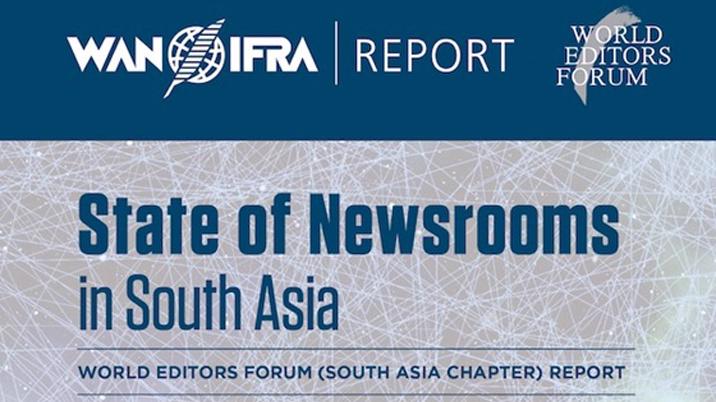
A survey of key editors and journalists across newsrooms in South Asia, whose results formed the basis of the report, was conducted in early 2019. The respondents were chosen from more than 35 large and small newsrooms – both print and digital, operating in various South Asian languages.
The report found the following as the most pressing issues, in this order:
- Shortage of editors (including multimedia editors)
- Need for upgrading editing skills
- Shortage of reporters and reporting resources
- Lack of technology in the newsroom
- Breaking news 24x7
Key findings:
- Most prefer to break the news first on the 'web' or digital media. But there is also a strong preference for the print media as a vehicle for some stories – rare interviews, features, investigative stories, analyses and the like.
- Platforms such as Facebook, Instagram and Google Accelerated Mobile Pages (AMP) have become an important part of the news ecosystem and more than 80% of the publishers who participated in the study said they used them to disseminate news to a wider audience. That said, newsrooms still experience some amount of discomfort while using digital platforms to disseminate news, given that the issue of ownership vs reach of the content remains in question.
- Fake news is a major concern in the newsroom. Almost all publishers make some effort to control it. Many newsrooms have formed separate desks for verifying news, and some have tied up with external fact-checkers.
- While online and agency sources have become common in the digital news reporting ecosystem, most newsrooms which participated in the study lay great emphasis on ground reporting.
- While about 40% of newsroom staff are women, the number of women in senior executive roles is very low. However, newsrooms claim they plan to add more women over the coming years.
- Almost all respondents said they trained journalist staff regularly, either internally or by registering them for external courses. But only one-third mentioned that they train their journalists in multimedia skills.
- Over 75% of the respondents said they used a content management system. And almost half said they planned to have a new content management system in the coming year.
The report also presented the ideas being followed to improve productivity in newsrooms.
Commenting on the report, Mukund Padmanabhan, Chairman of World Editors Forum - South Asia Chapter said: “The report, the first of its kind in the region, provides a comprehensive look from the inside into how news operations are carried out in the region. It finds, perhaps not entirely unsurprisingly, that a shortage of editorial staff with multimedia skills is a new and important challenge that newsrooms are newsrooms are grappling with. Apart from flagging the kind of problems and concerns that editors have about today’s newsroom, it provides a glimpse into what lies in store in the future. The report is a must-read for everyone in the newsroom.”
“The report addresses the long felt need for a report on newsroom operations in the region. The findings of the report would help to focus the industry attention to the pressing issues and look for collaborative solutions. World Editors Forum South Asia Chapter is pleased to publish this report and will come up with other programmes to address the pressing issues,” said Magdoom Mohamed, Managing Director of WAN-IFRA South Asia.












